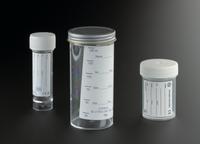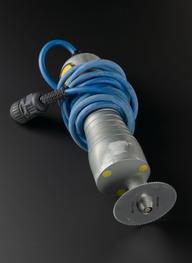





Small bottle containing carbolised catgut ligature, by J.F. MacFarlan and Co. of Edinburgh, c. 1870
Catgut has a misleading name as it is actually collagen taken from healthy mammals, usually sheep. Catgut ligatures were used to tie off arteries and vessels during surgery. The catgut was covered in carbolic acid (phenol). Joseph Lister (1817-1912) introduced catgut ligatures in 1869 as part of his antisepsis techniques. The carbolic acid was used to prevent infection. The ligatures were absorbed by the body once their work was done. J F Macfarlan, who manufactured and sold this product, made a number of surgical instruments and appliances for Lister under the surgeon’s direction.
Details
- Category:
- Surgery
- Collection:
- Sir Henry Wellcome's Museum Collection
- Object Number:
- A648229
- Materials:
- complete, glass, cork, paper (fibre product), cotton (textile) and materia medica
- Measurements:
-
overall: 67 mm 32 mm, .046 kg




